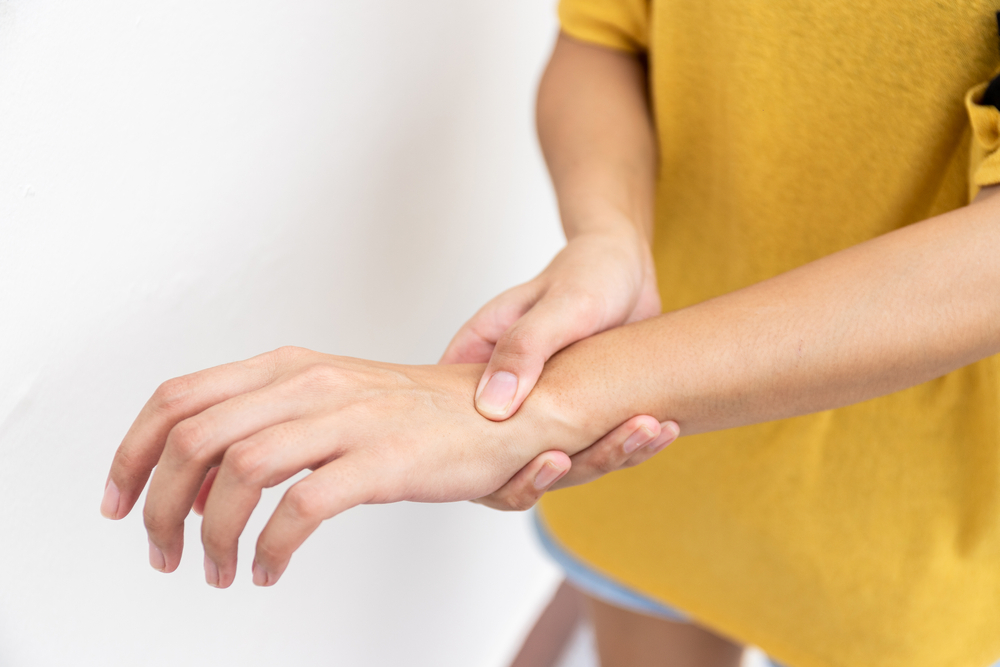

Weakness When Pushing Out Arms – Causes, Diagnosis, and Treatment at Emirates Hospitals Group
Experiencing weakness when pushing out your arms can be concerning, as it may interfere with simple daily activities like lifting, reaching, or carrying objects. This condition can stem from various causes, including muscle strain, nerve compression, or joint issues. At Emirates Hospitals Group, our specialists provide a thorough evaluation to determine the cause and offer the right treatment options to help restore strength and improve arm functionality.
Causes of Weakness When Pushing Out Arms
Several factors can contribute to weakness when extending your arms, including:
-
Rotator Cuff Injuries: The muscles and tendons surrounding the shoulder can become torn or strained, leading to weakness or pain when extending the arms.
-
Nerve Compression: Conditions such as cervical radiculopathy or brachial plexus injury can cause weakness in the arms by compressing nerves in the neck or shoulder area.
-
Frozen Shoulder (Adhesive Capsulitis): The shoulder joint becomes stiff and difficult to move, leading to pain and weakness when trying to extend the arm.
-
Tendonitis or Tendon Injury: Inflammation or injury to the tendons, often caused by overuse or repetitive motions, can result in weakness or discomfort when extending the arm.
-
Arthritis: Joint inflammation, especially in the shoulder or elbow, can restrict movement and cause weakness when trying to push or extend the arm.
-
Muscle Strain: Overexertion, heavy lifting, or poor posture can lead to muscle strain, causing weakness or pain when trying to move the arms.
-
Bursitis: Inflammation of the bursa (fluid-filled sacs) around the shoulder can lead to discomfort and weakness when attempting to extend the arms.
-
Neurological Conditions: Conditions like multiple sclerosis, stroke, or peripheral neuropathy may affect nerve function and cause weakness when extending the arms.
-
Fractures or Injuries: Previous arm, shoulder, or wrist fractures can cause lasting weakness when pushing out the arms due to improper healing or lingering joint instability.
Symptoms of Weakness When Pushing Out Arms
Common symptoms associated with weakness when extending the arms include:
- Difficulty pushing or extending arms fully.
- Pain or tenderness in the shoulder, upper arm, or wrist.
- Stiffness or restricted movement in the shoulder or arm.
- Fatigue or weakness in the arm muscles, especially after use.
- Decreased range of motion, making it hard to reach or lift objects.
- Weakness that worsens with repetitive motions or activities.
Diagnosis of Weakness When Pushing Out Arms
Diagnosing the cause of weakness when extending the arms requires a thorough evaluation by a healthcare professional. Diagnostic methods may include:
-
Physical Examination: The doctor will assess arm strength, range of motion, and areas of pain or tenderness.
-
Medical History: A detailed review of prior injuries, surgeries, or underlying health conditions that may contribute to the weakness.
-
Imaging Tests:
- X-rays: To check for fractures, joint degeneration, or arthritis in the shoulder, elbow, or wrist.
- MRI or Ultrasound: These imaging techniques help visualize soft tissues like muscles, tendons, and ligaments, aiding in the detection of injuries or inflammation.
-
Electromyography (EMG): This test evaluates the electrical activity of muscles and nerves to determine if nerve compression or injury is causing the weakness.
-
Nerve Conduction Studies: If a nerve issue is suspected, these tests assess how well electrical signals travel along the nerves and identify any abnormal nerve function.
Treatment for Weakness When Pushing Out Arms in Dubai
The treatment for weakness when extending the arms depends on the underlying cause. Common treatment options include:
-
Physical Therapy: Targeted exercises to improve muscle strength, flexibility, and mobility in the arm and shoulder. A physical therapist may design a program to help restore normal movement and function.
-
Pain Management:
- NSAIDs: Nonsteroidal anti-inflammatory drugs can help reduce pain and inflammation associated with tendonitis, arthritis, or bursitis.
- Corticosteroid Injections: In cases of severe inflammation, corticosteroid injections can provide relief by reducing swelling and pain in the affected area.
-
Rest and Ice Therapy: Resting the affected arm and applying ice can reduce inflammation and prevent further strain on the muscles and tendons.
-
Surgery: In cases of severe injury, such as rotator cuff tears or fractures, surgery may be necessary to repair damaged tissues and restore normal function.
-
Bracing or Splinting: If the weakness is caused by a joint issue or muscle strain, wearing a brace or splint may provide support and limit movement to allow healing.
-
Massage Therapy: Therapeutic massage may help relieve muscle tightness and improve circulation, promoting healing and reducing discomfort.
-
Ergonomic Adjustments: For individuals with repetitive motion injuries, adjusting posture or work habits may help prevent further strain and manage symptoms.
Request an appointment
Please complete the details and we will book you shortly.
